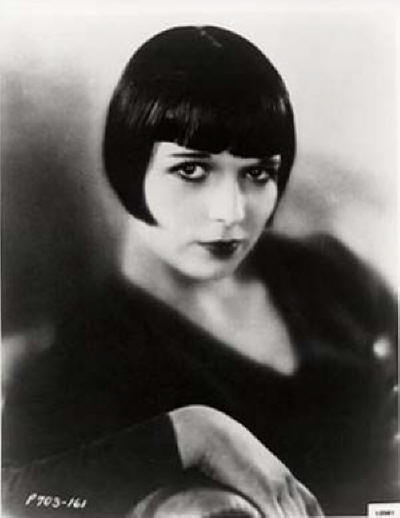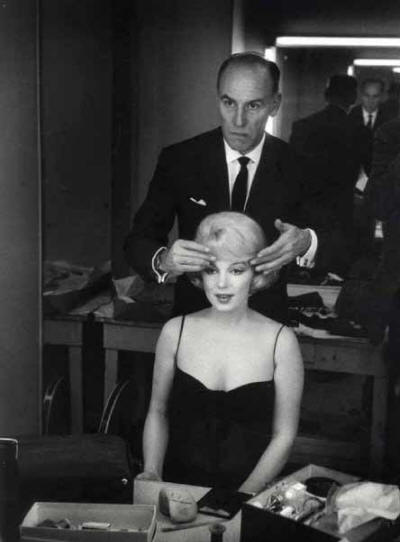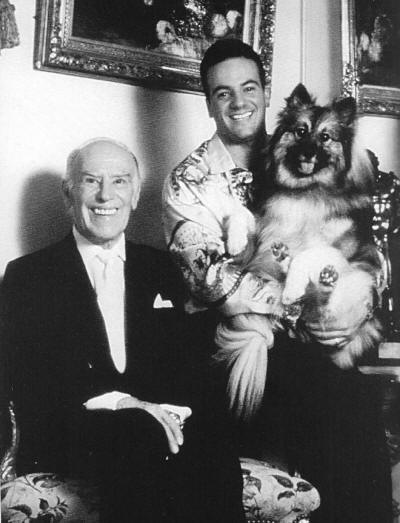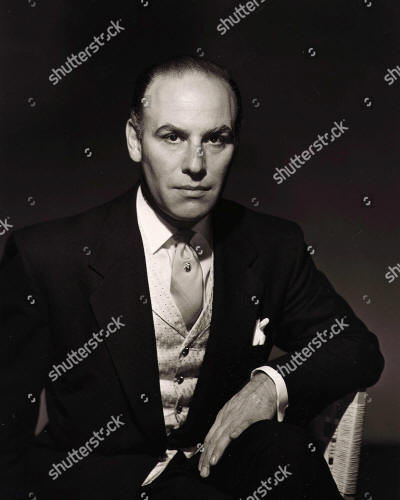

Queer Places:
133 W 71st St, New York, NY 10023
310 E 55th St, New York, NY 10022
10641 Lindbrook Dr, Los Angeles, CA 90024
1118 Calle Vista Dr, Beverly Hills, CA 90210
242 Copa De Oro Rd, Los Angeles, CA 90077
 Sydney Guilaroff (November 2, 1907 – May 28, 1997)[1][2] was a hair stylist during Hollywood's Golden Age who was the first to receive on-screen credit in films.[3] He worked for more than 40 years at the Metro Goldwyn Mayer studios on more than 1,000 films.[1] He was instrumental in crafting many of the hairstyles that became the signature looks for numerous film stars.[2]
Sydney Guilaroff (November 2, 1907 – May 28, 1997)[1][2] was a hair stylist during Hollywood's Golden Age who was the first to receive on-screen credit in films.[3] He worked for more than 40 years at the Metro Goldwyn Mayer studios on more than 1,000 films.[1] He was instrumental in crafting many of the hairstyles that became the signature looks for numerous film stars.[2]
Guilaroff was born in Winnipeg, Manitoba, Canada, to Eugene Abraham Guilaroff and Annie Snitkin, Russian Jewish immigrants. The family lived in both the cities of Winnipeg and Montreal. His sisters Olga Guilaroff and Vera Guilaroff[4] were also prominent in the theater. At age 14, Guilaroff left Canada for New York City and found work in the stockroom of Gimbels department store. An on-the-job accident caused him to leave, and at times his financial situation forced him to sleep on benches in the city's Central Park. His fortunes changed when he was hired as a beautician's assistant. His menial responsibilities included sweeping the floor of a hair salon. The owner recognized the teenager's energy and enterprise, and proceeded to mentor him in the hairdressing trade. By the age of 16, Guilaroff had become so proficient a hair stylist that he had established a considerable clientele. His blossoming career, however, was interrupted by a diagnosis of tuberculosis, which required his return to Canada. He recovered and returned to New York to continue his profession as hairdresser. It was during this period, working as a hairstylist at the McAlpin Hotel, that Guilaroff is reputed to have created silent screen star Louise Brooks' signature bob. He also devised the hair looks for actresses Corinne Griffith and Miriam Hopkins. He ultimately found a position at Antoine de Paris’s, one of the city's most exclusive salons located at Saks Fifth Avenue, where he was known as Mr. Sydney and said he first cut Claudette Colbert's hair. Soon Mr Sydney had his own salon at Bonwit-Teller.
The guiding force in Guilaroff’s rise to prominence as hairdresser to the stars was effectuated by actress Joan Crawford. Crawford brought Guilaroff to Hollywood and MGM where he held the position of chief hair stylist from 1934 into the late 1970s.[5] At a time when a star’s screen appearance was a significant function of the studio’s image machine, Guilaroff’s skills crafted distinctive looks, which came to be identifiable with the stars for which they were conceived. He was recognized as a master in his profession with an instinctive, creative eye. “…[Guilaroff] gave Claudette Colbert her bangs, made Lucille Ball a redhead, gave Judy Garland her Wizard of Oz braids, and cut, curled, coiffed and cosseted virtually every other MGM star in his 40-year reign as Hollywood’s most creative and celebrated hairdresser.”[1]



Sydney Guilaroff and his former employee, later adopted “grandson” Jose. Guilaroff was MGM’s head hairstylist for 40 years. The first studio hairstylist to receive screen credit.
He was also the first single man allowed to adopt another grown man. Not a common practice but something rich and famous gays were able and encouraged to do as a legal means of assuring lovers and life-partners received inheritances and had access to hospital “family only” visiting rules when courts did not recognize any form of same-sex relationship. Liberace had plans to adopt one of his lovers, as did actor Raymond St. Jacques.

Considering the work of classic Hollywood's gay directors and gay producers, a small but vital subset of the studio system, suggests "queer cinema" might not be such a modern postulate. Occasionally, a convergence of director, producer, writer, and star came together, such as happened with Camille (1937). The gay writer DeWitt Bodeen said that Camille "represents a meeting of talents that were perfect for its interpretation." In fact, wags like to call the picture a rare "all-gay" studio production, and in some ways it comes close: producer David Lewis, director George Cukor, screenwriter Zoe Akins. Greta Garbo, too, and Mercedes de Acosta had a hand in the early draft of the script before Akins took over. Robert Taylor, who played a stunningly beautiful Armand, was rumored to be having an affair with the film's set decorator, Jack Moore. There was also Adrian on costumes and Sydney Guilaroff doing hair. Rex O'Malley infused his Gaston with a natural feyness, a quality perhaps intended by Cukor and Akins, and another gay actor, Rex Evans, played several bit parts. ("Who is that big man and what part is he playing?" Garbo asked Cukor. "That man is Rex Evans," the director replied, "and he's playing the part of a friend who needs a job.") Cukor also manuevered the hiring of another friend, and another gay man, as the picture's true art director, supplanting the ubiquitous Cedric Gibbons, whose contract nonetheless decreed screen credit. This was Oliver Messel, esteemed scenic and costume designer from the London stage, whose outsider status evoked suspicion in the competitive world of the Hollywood studios. It wasn't Messel's first encounter with the studio bureaucracy; in 1935, during the filming of Romeo and Juliet, Cukor had caused a near war by insisting Messel design the costumes instead of Adrian, whom Cukor, according to several friends, viewed as pompous and pretentious. Cukor, as discreet as he was, never tried to obfuscate either his Jewishness or his gayness in the way Adrian did. "I get annoyed with statements that call George "closeted",", said his longtime friend and Los Angeles Times film critic Kevin Thomas. "George was never closeted. He never pretended to be anything he wasn't. He lived according to the rules of his time, that's all."
Guilaroff never married.[1] In 1938, he became the first single man in the United States to adopt a son whom he named Jon in honor of Joan Crawford. The adoption was opposed by the state of California, which took legal means to prevent the adoption. Guilaroff, however, ultimately prevailed and subsequently adopted another son, Eugene D., in 1941, and some years later a third son, who had been a former employee.[5]
Guilaroff maintained his most formidable undertaking had been his work for the 1938 film Marie Antoinette, for which 2,000 court wigs were required and an additional 3,000 wigs for the extra players.[2] He was uncredited as hair stylist for Vivien Leigh in Gone With the Wind (1939).[6][3]
Michael Logothetis (December 1, 1913 - November 27, 2004), who lived with Guilaroff for many years, acknowledged that Sydney did his best to hide his "secret". A student at UCLA when he moved into Guilaroff's Bevery Hills home in the late 1940s, Logothetis said he and Sydney were close friends but never lovers. "I knew Sydney was "that way"," Logothetis said. "If I came home and there was a young man with him on the couch, I'd ask that it not be done when I was around." Sydney doted on Logothetis; at one point, he signed over his property to him. "We were all the time together, except we separated to go to sleep," Logothetis told the Los Angeles Superior Court when a property dispute erupted between them in their later years. "Many times Sydney was sick, so every time something is wrong, we go to the hospital or the doctor. Sydney would cook. He is a wonderful cook. We would eat together. We watched the news until eleven, eleven-thirty every night, sometimes twelve o'clock."
Passionate about privacy, he granted a rare interview to the writer John Kobal in the 1950s but refused to be tape-recorded. Unwilling to reveal much about himself, Sydney did prove to be a "fascinating gossip" about other people, calling Cecil Beaton "a swishy little boy" and Oliver Messel "small-minded and nasty." His sons had proved headaches, he revealed Kobal, with Eugene serving time in jail. "At first I used to cry about it at night," he said, "but now I'm used to it."
Grace Kelly chose Guilaroff to style her hair for her 1956 wedding to Prince Rainier of Monaco.[2]
Guilaroff belonged to the pallbearers of Marilyn Monroe's casket the day of her funeral on August 8, 1962.
Guilaroff continued dressing star actresses' hair into the 1980s, boasting, at 857 pictures, one of the longest screen credits in history.
Guilaroff won a Primetime Emmy Award for Outstanding Achievement in Hairstyling for a Miniseries or Special for The Two Mrs. Grenvilles (1987) starring Ann-Margret and Claudette Colbert.[9]
When Lena Horne filmed her introductions to her scenes in the MGM musical documentary That's Entertainment! III (1994), she requested that Guilaroff come out of retirement to style her hair, some 50 years after he first styled it in Cabin in the Sky (1943).[8]
Over his long and distinguished career, Guilaroff's clients included Elizabeth Taylor, Judy Garland, Lana Turner, Greta Garbo, Lena Horne, Greer Garson, Debbie Reynolds, Ann-Margret, Barbara Stanwyck, Cyd Charisse, Marilyn Monroe, Katharine Hepburn (the sophisticated coif in The Philadelphia Story), Ingrid Bergman, Hedy Lamarr, Kathryn Grayson, Liza Minnelli, Clare Booth Luce, Ginger Rogers, Debbie Reynolds, Geraldine Page, Libby Holman, Norma Shearer (the twenty pound bejeweled wigs in Marie Antoinette) and Nancy Reagan. He was the stylist of choice for such male stars as Cary Grant, Clark Gable, Fred Astaire, James Stewart, Spencer Tracy and Frank Sinatra.[3][1]
Guilaroff was both one of the most effete of all the studio homosexuals and one of the most determined to deny it. Even in the 1990s, in his memoir Crowning Glories, Guilaroff claimed he had romantic affairs with Greta Garbo and Ava Gardner.[10] Most reviewers and historians greeted such audacious stories with amusement. "I think even Sydney was a little embarassed reading all that when it came out," said his longtime companion, Michael Logothetis. "He knew no one believed it." Esther Williams in her autobiography and Scotty Bowers in his memoir[11] asserted that Sydney Guilaroff had romantic affairs with Scotty Bowers.
Shortly before Guilaroff's death, he would reconcile with Logothetis. "We were friends for a long time," Logothetis said, "and his last years were very sad." Previous to this, Sydney had lived with a much younger man he called his "adopted grandson," who, after posing for Sydney's memoirs, reportedly took off. The memoirs, meanwhile, were rejected by all the top publishing houses, despite a drumroll of support from gossip columnist Liz Smith; they were eventually published by a small press.
Nearly blind, Guilaroff was moved into a rest home, where he died on May 28, 1997 at age 89.[2]
My published books: